Mt. Amadablam Expedition (6812m)

Mt. Ama Dablam expedition has long been considered the prettiest mountain in the world. High on her Southwest face hangs a glacier resembling a ‘Dablam’ – the sacred ornament box worn by ladies in the Sherpa community. It was this spectacular feature that got her the name “Ama Dablam”. She lies alongside Everest in the heart of the Khumbu valley offering a superb climb up a spectacular ridge. The route we follow begins at Lukla (2850m) and the initial days of the trek pass through the legendary Sherpa country up the spectacular high valley of the Khumbu. Much of he route on the actual climbing is fixed with no icefall or glacier to negotiate, and most of it is concentrated on the crest of a ridge. The climb is relatively safe though exposed and sheep and not really a mountain for debutantes.
Amadablam is renowned for its incredible beauty. Located to the south of Everest and Lhotse, it is characterized as vertical walls and sharp exposed ridges. We climb via the ascent route, the classic southwest ridge.

The climb requires a strong mountaineering background and previous high altitude experience. We will fly to Lukla and trek to Amadablam base camp via Namche bazaar and Tengboche. From base camp at an altitude of 4500m, we will erect at least three camps in the mountain slopes.
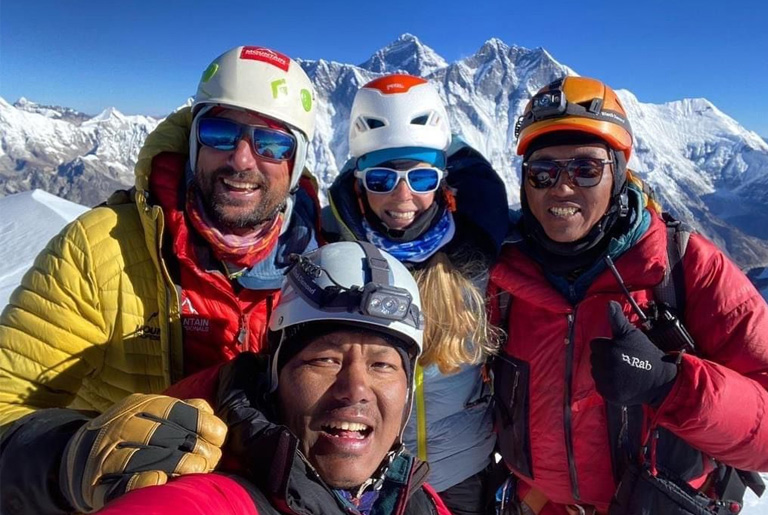
Our highly experienced Sherpa team will fix the ropes and assist whenever necessary. From our high camp, we’ll make the final push to summit along steep and snowcapped slopes. We will climb along a nicely exposed ridge providing unsurpassed views from one of the world’s most coveted peaks.
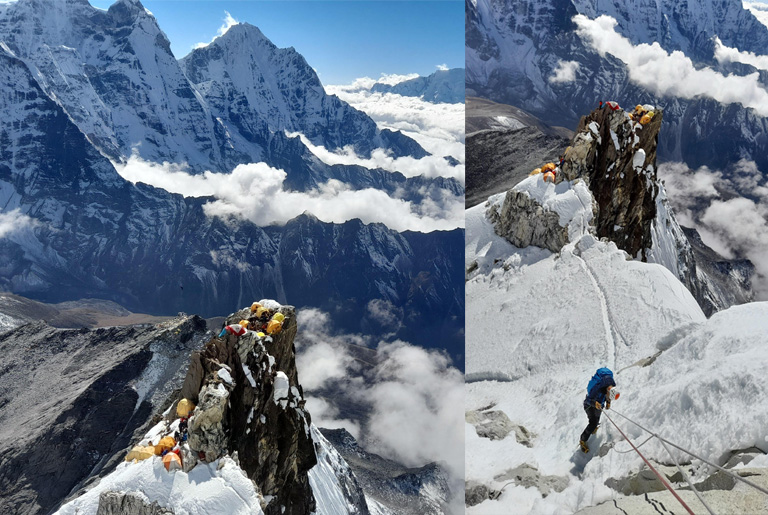
The Unique Adventure International offers one of the highest quality commercial operations available in Amadablam. The expedition consists of ample support with delicious meals. We’ll use plenty of Sherpa power to ensure the greatest chance of success. Ama Dablam has long been considered the prettiest mountain in the world. High on her Southwest face hangs a glacier resembling a ‘Dablam’ – the sacred ornament box worn by ladies in the Sherpa community. It was this spectacular feature that got her the name “Ama Dablam”. She lies alongside Everest in the heart of the Khumbu valley offering a superb climb up a spectacular ridge.
The route we follow begins at Lukla (2850m) and the initial days of the trek pass through the legendary Sherpa country up the spectacular high valley of the Khumbu. Much of his route on the actual climbing is fixed with no icefall or glacier to negotiate, and most of it is concentrated on the crest of a ridge. The climb is relatively safe though exposed and sheep and not really a mountain for debutantes.
Highlights of the Expedition
Passing through Namche Bazaar (gateway to Mt. Everest), explore 200 years old Tyangboche monastery, Pangboche monastery, and panoramic views of the dozens of grand Himalayan peaks.
Experienced Required
The Ama Dablam climb is not for novice mountaineers. It will require members to be comfortable ascending and descending steep terrain on fixed ropes. A high technical standard is not mandatory because primarily the local Sherpa guides will be leading the climb and fixing the route. However, this is not a mountain to visit and then discover that you are not comfortable with exposure.
You must have solid rock climbing and cramponing skills and be able to climb and rappel with a pack on. You’ll be jumaring on fixed ropes. There are several short, steep sections of near vertical ice and rock on the spectacular ridge between Camp 1 and Camp 3 that require strength and technique. Most importantly, you need good common sense and the ability to learn and adapt. Ama Dablam is usually climbed un-roped, using fixed ropes, so it is common for climbers to move together but at the same time be semi-independent on the mountain between camps. We will provide a walkie-talkie to all climbers so they can stay in contact.
Our ‘Ama Dablam expeditions ‘ is not a “guided” . “Guiding” and being “guided” implies the intimate supervision and care of a “client” by a “Guide” who can be responsible for the direct and immediate control of safety. We believe on mountaineering, such a direct duty-of-care, implicit in the traditional guide-client relationship.
Important Note
The above itinerary is not a fixed program but is intended to give an indication of the likely events during the expedition. Please note that because of climbing High Mountain, it will be necessary to have a flexible plan in order to take the best advantage of situations as they present themselves. Any changes to the itinerary will be made with a view to maximizing the benefit to the team members and of ensuring their eventual success on the mountain.
Normally climbers will change their departure flights from Kathmandu when they know exactly when the expedition is going to end. We plan to stay at Base Camp for climbing as long as it takes for us to be successful.
Team members should take out private insurance if they wish to be covered against cancellation due to medical or personal reasons. This is called trip Cancellation insurance and can be obtained from your normal travel agent.
Flight Delay in Kathmandu and Lukla
Twin Otter is the primary mode of transport to and from the airstrip at Lukla. This service is fairly dependable. Sometimes, flights (to and from Lukla) may be cancelled due to mountain weather conditions or technical problems. In such case, Himalayan Trail Blazer will charter a helicopter to ensure you are on schedule for your international flight. The helicopter can fly if the visibility is 1500m, while the twin otter can fly if the visibility is 5000m, as per Nepal’s Civil Aviation rules.
The cost of the helicopter is payable directly to our Kathmandu office in the event that this service is utilized. US cash, traveler’s cheques, or credit cards (Visa Cards, Master Cards only) are accepted. You will be given a receipt upon payment so that you may claim the amount from your travel insurance. The minimum cost will be US$1000 and maximum US$3500 depending on the number of group members.
Day 1: Arrival in Kathmandu (1,300 m) – Welcome and Expedition Briefing
Arrive at Tribhuvan International Airport in Kathmandu, where our representative will greet you and transfer you to your hotel. After some rest, meet your expedition leader for an orientation about the Mt. Ama Dablam climb. The evening includes a detailed briefing on the journey, safety protocols, and equipment checks. You’ll also enjoy a welcome dinner introducing Nepali cuisine and culture. Overnight stay in a comfortable hotel in Kathmandu.
Day 2: Cultural Sightseeing in Kathmandu (1,300 m)
Today’s guided city tour reveals the rich heritage of Nepal’s capital. Visit the sacred Hindu temple of Pashupatinath, observe traditional cremation rituals by the Bagmati River, and explore Boudhanath Stupa, one of the largest Buddhist stupas in the world. After lunch, head to Patan Durbar Square, a UNESCO World Heritage Site known for its intricate woodwork and metal craftsmanship. This day provides a glimpse into Nepal’s medieval artistry and spiritual diversity. Return to your hotel for rest and final gear preparation.
Day 3: Expedition Preparation and Ministry Briefing (1,300 m)
Spend the day preparing logistics and attending an official expedition briefing at the Ministry of Tourism. The session covers mountaineering regulations, environmental guidelines, and route safety measures. Our team will help you review your climbing gear and finalize permits. The rest of the day is free for shopping or relaxing in the Thamel district. Overnight at your Kathmandu hotel.
Day 4: Fly to Lukla (2,840 m) and Trek to Phakding (2,640 m)
A scenic 35-minute flight to Lukla offers breathtaking views of the Himalayas. After meeting the Sherpa crew, begin your trek through pine forests and small Sherpa villages toward Phakding. Walk along the Dudh Koshi River and cross suspension bridges draped in prayer flags. The trail is gentle and perfect for acclimatization. Overnight stay at a cozy teahouse in Phakding.
Day 5: Trek from Phakding to Namche Bazaar (3,446 m)
Today’s trek takes you through lush rhododendron forests and across several high suspension bridges. Enter Sagarmatha National Park and enjoy your first close view of Mt. Everest. The steep ascent to Namche Bazaar, the gateway to Everest and Ama Dablam regions, rewards you with stunning panoramas. Spend the evening exploring local shops and cafes surrounded by mountains. Overnight at a guesthouse in Namche.
Day 6: Acclimatization Day in Namche Bazaar (3,446 m)
Spend the day acclimatizing to the altitude while exploring Namche’s surroundings. Visit the Everest View Hotel for breathtaking views of Ama Dablam, Everest, and Lhotse. You can also visit the Sherpa Museum to learn about Himalayan culture and mountaineering history. Acclimatization hikes help prepare your body for higher elevations ahead. Overnight in Namche Bazaar.
Day 7: Trek from Namche to Tengboche Monastery (3,867 m)
The trail follows ridgelines with magnificent views of Ama Dablam and Everest before descending to the Dudh Koshi River. After crossing the bridge, climb through a pine forest to reach Tengboche, home to the region’s largest Buddhist monastery. Attend the evening prayers surrounded by mountain serenity. The view of Ama Dablam glowing in the sunset is unforgettable. Overnight at a guesthouse in Tengboche.
Day 8: Trek to Ama Dablam Base Camp (4,570 m)
Descend through forests and cross the Imja Khola before ascending toward Ama Dablam Base Camp. The trail passes picturesque Sherpa settlements and yak pastures with panoramic mountain backdrops. Arrive at the base camp, set in an open meadow beneath the towering Ama Dablam peak. The expedition tents will be set up for your stay. Overnight at the tented base camp.
Day 9: Rest and Training at Ama Dablam Base Camp (4,570 m)
Spend the day acclimatizing and preparing climbing equipment under the guidance of your climbing leader. You’ll practice rope techniques, use of crampons, and other technical skills required for the ascent. This rest day helps your body adjust before moving to higher camps. Enjoy stunning close-up views of Ama Dablam’s iconic southwest face. Overnight at base camp.
Day 10–29: Summit Climbing Period – Mt. Ama Dablam (6,812 m)
The next 20 days are dedicated to climbing the majestic Ama Dablam. You’ll gradually establish higher camps (Camp I, II, III) and make summit attempts based on weather and acclimatization. The route features technical rock, snow, and ice sections offering a true Himalayan challenge. Reaching the summit rewards you with breathtaking 360-degree views of Everest, Lhotse, and Makalu. After summiting, return safely to base camp for recovery.
Day 30: Trek Back to Tengboche (3,867 m)
After successful completion of the climb, pack up and begin your return trek. Descend along the familiar trail through alpine meadows and rhododendron forests. The peaceful monastery of Tengboche provides a serene place to reflect on your journey. Enjoy the comfort of a guesthouse stay after the expedition. Overnight at Tengboche.
Day 31: Trek from Tengboche to Namche Bazaar (3,446 m)
Follow the Dudh Koshi trail downhill through forests filled with Himalayan wildlife. Cross suspension bridges and pass small Sherpa hamlets before arriving at Namche Bazaar. The town’s vibrant atmosphere feels even more rewarding after your summit success. Spend the evening celebrating with your team. Overnight at a guesthouse in Namche.
Day 32: Trek from Namche to Lukla (2,840 m)
Descend through the scenic valley following the same route back to Lukla. The trek is easier and filled with nostalgic views of the Himalayas. Arrive at Lukla and share a farewell dinner with your Sherpa team. This marks the end of your trekking adventure. Overnight at a guesthouse in Lukla.
Day 33: Fly Back to Kathmandu (1,300 m)
Enjoy an early morning flight from Lukla to Kathmandu. The brief yet stunning flight offers one last glimpse of the snow-capped peaks. After arrival, transfer to your hotel and enjoy a well-deserved rest. In the evening, you may explore Thamel’s shops or enjoy a celebratory dinner. Overnight at your hotel.
Day 34: Leisure Day in Kathmandu (1,300 m)
A full free day for relaxation, shopping, or optional activities. You can explore more cultural sites, get a traditional Nepali massage, or simply unwind at your hotel. It’s also a buffer day in case of weather delays during flights. Enjoy a farewell dinner hosted by the expedition team. Overnight at a hotel in Kathmandu.
Day 35: Departure from Kathmandu (1,300 m)
After breakfast, our representative will escort you to Tribhuvan International Airport for your flight home. Bid farewell to Nepal with memories of one of the most beautiful and technical climbs in the Himalayas. We hope to see you again for your next mountain adventure. End of the Mt. Ama Dablam Expedition journey.
Cost Includes
– Airport / Hotel / Airport pick up & drop by Tourist vehicle.
– Standard twin sharing accommodation in three star hotel in Kathmandu; Breakfast included. (6 nights)
– Guided city tour in Kathmandu byTourist Vehicle.
– All your standard Meals during the lodge to lodge trek (Breakfasts, Lunches and Dinners).
– Lodges, Guesthouses accommodation during the trek (Twin sharing room at guesthouse)
– Full board meal during the camping at base camp, prepared by our cook with hot Tea & coffee.
– All base camp and Advance base camp camping gears (We will provide fully water proof dining tents, kitchen gears, dining table, chairs, toilet tents, shower tent at the base camp and advance base camp)
– High quality Climbing tents for all camps.
– Insurance for all Nepali staffs and porters including helicopter rescue provision.
– Boiled and purify drinking water for the trek and at base camp.
– Expedition permits
– Liaison officer and his round trip flight, insurance, wages, expedition equipments etc.
– High altitude climbing food, fuel, Gas- above base camp (you are also advised to bring some high altitude food yourselves)
– Guide, cook, porters, helpers up to base camp
– Climbing Sherpas (2 member = 1 Sherpa Ratio on climbing day)
– A well stocked first aid and medical kit sufficient to counter any possible mountaineering ailments, from headache to serious injury.
– Oxygen equipment for medical use only.
– A portable hyperbaric chamber (Gamow bag)
– Emergency communications on the mountain and satellite communications link for helicopter evacuation.
– Sightseeing/Monument entrance fees in Kathmandu.
– Farewell dinner for members in Kathmandu.
– Power supply at Base Camp for charging electronics such as phone, laptops and cameras (solar backup)
– Flight cost from Kathmandu – Lukla – Kathmandu including airport departure tax at both airport.
– All our government taxes and vat.
Cost Does not Include
– Lunch and dinner whilst in Kathmandu.
– Travel insurance which covers emergency Rescue and Evacuation.
– International airfare and airport departure tax.
– Nepal entry visa; you can obtain a visa easily upon your arrival at Tribhuwan International Airport in Kathmandu. (Tourist Visa with Multiple Entries for 30 days can be obtained by paying US $ 40 or equivalent foreign currency. Similarly, Tourist Visa with Multiple Entries for 90 days can be obtained by paying US $ 100. Please bring 2 copies of passport size photos).
– Alcoholic and cold drinks.
– Personal trekking and climbing Equipment (See the trekking equipment page).
– Tips for trekking staff and driver (Tipping is expected, see info below).
– Any others expenses which are not mentioned on ‘Price Includes’ section.
Recomended tipping and sherpa bonuses are as follow:
– Allow $50-100 for general non-sherpa crew who stay at base camp.
– Allow $100-200 for sherpas who go up to the base camp.
– Summit climbing Sherpa US$ 200 – 500 per Sherpa.
How the Expedition will operate?
After meeting all your team and crew in Kathmandu we fly by helicopter or fixed wing plane directly to Lukla and follow the Khumbu Valley to Namche Bazar. Acclimatizing along the way and relishing in the hospitality provided by our Sherpa friends we reach base camp and after some rest and preparation we begin the ascent. Base camp will be a collection of sleeping tents, as well as a large kitchen and dining tent. We utilize the services of specially trained Sherpa cooks and we import a lot of high quality food to supplement the local produce available. The guides and Sherpas will fix rope on the route and stock the camps with provisions and equipment. By utilizing fixed rope we can climb in average weather, and, if necessary descend to base camp with little problem in case of a major storm. Two or three climbing Sherpas will assist with the load carrying but no more will be engaged in order to avoid clogging the route and spoiling the nature of the climb. When the fixed line is in place, and the two camps are established and stocked, we will climb back up the ropes and make a bid for the summit. Sufficient supplies will be available to support all members. Guides and Sherpas will carry all group gear but members are expected to carry their own personal gear. Radios will be used to co-ordinate the movements on the mountain and provide a safety back-up for the lead team. It is reasonable to expect that a strong team can climb this route in around two weeks.
I want to climb Ama Dablam, but there are so many options and the cost seems high! Why should I choose Himalayan Trail Blazer? What makes you different to other companies out there?
As we all know that when you make a decision to climb the mountain it is one of the most financially challenging trips to come on. Our prices compared to other outfitters that provide the same product, services, if not a lesser product are actually less! We invite you to shop around and compare, both in price and quality. We feel strongly that you will find us to be the best in the business.
One of the main things that set us apart is our attention to detail. Nowhere else you will find a team of people more dedicated to your success! From the time you contact the office to the time you step on the mountain, our customer service is the best. Another most important reason to choose is our community service.
Our trip prices are much more reasonable compare to many global based companies; it is not because we are economical in service in which we operate. We are local operator therefore we DO NOT re-sell or use second party or agency. Many international companies will take anything from one third to three quarters of the profits this is how your trip price makes huge unusual.
As the trip is so long, can I bring food and other gear not on the list?
Of course! Most people on the Everest expedition, members end up bringing “the kitchen sink”! We encourage you to bring some of your favorite goodies and tech toys, as base camp will become our home for 2 months or so. The more comfortable you are, the more energy you have for the climb, so every little thing helps!
Is there a private trip option too? If yes, how does that work and what are the costs?
Taking as your Everest expedition is a once in a lifetime experience, we wanted to make sure you have every possible advantage. Some clients enjoy the added privacy and schedule flexibility that a private expedition allows. A private means you will have your own guides, your share of the Sherpa carry staff, a private dining tent, and optional private communication facilities. This allows you to climb at your own pace, and enjoy the mountain on your own terms. The costs vary depending on how many clients there are in your private group. Please contact the office for details.
Are the skills/prior experiences required for this climb?
Simply, You cannot just decide to write a cheque and go and climb Mt. Everest! A comprehensive climbing resume is required to join our team. The most required factor on our ‘Himalayan Trail Blazer Everest Expedition’ is that the participants must have a solid understanding of mountaineering skills. This should include previous high altitude experience of at least 6,000 meters, mixed with a multitude of Alpine mountaineering and, preferably, you will have taken part in a previous 8,000-metre expedition. Please let us know if you want us to arrange training program in some of the 6000 and 7000 meters peaks in Himalaya before your Everest expedition begin. Our Three Peaks Climbing Courses or Pumori Expedition is appropriate for preparing Everest expedition. By our experience we have found that those who have been to 7000 to 8,000-meters peak previously have a considerably better chance of getting to the top of Everest. We would strongly advise you to climb one of the other 7000 or 8,000 meter peaks before going to Everest, as this is the best way of ensuring the money you spend on Everest will be rewarded by a successful ascent and a safe return home. Exceptionally, however, climbers who have not had the chance of climbing 7000 to 8,000 meters peak may consider Everest if they have a compensating depth of experience.
What is the conditioning level needed for this climb?
You should be in the best shape of your life! This is our longest expedition of the year. It requires patience, stamina, mental fortitude, and a strong will. Summit day can sometimes be over 20 hours long! Day by day the challenges are different, but the more prepared you are, both mentally and physically, the smoother your trip will go.
In a team, how many climbers will be on this expedition?
Maximum 10 members can be included on our Himalayan Trail Blazer Everest expedition. This is to ensure that we can maintain safety and our attention on detail. There may be more in base camp and in the camps on the mountain if there are private expeditions, but they will generally travel separately from the main team.
Can I contact other climbers or guides for this expedition?
Yes, we encourage that. Perhaps there may be someone in your area that can become a training partner, perhaps they can help you source some hard to find gear. The bottom line is that it’s a good idea to have some contact with folks that you will share this experience with.
Will I be sharing a tent or room with other climbers? Is there a single room option on this trip?
You will have your own tent in base camp, but on the mountain, you will be sharing a tent with others. We generally book you in to a single room in the hotel in Kathmandu whilst it is twin share in the lodges on the trek into base camp. A single supplement is available. Please contact us for further details.
Is the food in mountain prepared to international standard in terms of safety?
YES, the food is very safe during the trekking and we recommend you to eat the vegetarian and local food.
Is water provided and is there still water available at higher altitudes? Is it filtered/boiled? Readily available?
Bottled water is easily available at the lodges and tea houses. You can buy bottled water at the cost of USD 2 at lower elevations to USD 4 to higher elevation per littler. You can also drink the normal tap or spring water if you bring the purifying aid with you.
What mode of transportation do you use?
Himalayan Trail Blazer is all about providing you with local insights, lifestyle as well as adventure. Depending on the nature of the travel, the transportation to and from the destination varies from domestic flights to vehicular transportation to even piggyback rides on mules and yaks. We provide you only those options which enhance your local experience while allowing you to travel comfortably and efficiently. We use private tourist vehicles for sightseeing, city tours and pickups. Depending on the group size we use cars, minibus, vans or alternatively 4WD SUVs, more maneuverable in travelling along the narrow and bumpy roads of Nepal. All the vehicles are usually air-conditioned unless we are travelling in cooler areas.
For domestic flights (Kathmandu – Lukla – Kathmandu), we use Tara Air, Agni Air -popular domestic airlines.
What is the best season for this trekking?
Every trekking trip up the mighty Mt. Everest presents its own amazing, unforgettable moments that forever live on in the hearts and minds of those brave enough to make the climb. One of the most unpredictable elements of the Everest region is the weather. If you’re not properly prepared for the twists, turns and volatility of the conditions that can occur in this breathtaking region, you might find yourself in an uncomfortable and unpleasant situation. Here are some weather basics to help ensure that you come to the Himalayas as well equipped and prepared to face anything.
Generally speaking, the nights are much cooler than the daytime hours in the Everest region. Many first-time trekkers are surprised to learn about the incredible range that may occur in a given day. During the day, the thermometer could reach temps as high as 25 degrees C, only to dip down as low as -20 degrees C in less than 24 hours. While there’s no way to know exactly what each day in the mountains will bring, the weather and temperature ranges tend to be somewhat predictable based on the month and season.
Spring – March / April / May / June
Spring happens to be one of the best times of the year to visit the Everest region, although because of this, it can become somewhat crowded. One can meet many other Everest climbers during this season and base camp is full of tents. The beautiful clear blue sky can be seen and the many different species of flower are visible in the lower altitude.
During springtime, the average temperature is 17 degrees C with a maximum of 25 degrees C during sunny days and a minimum of -15 degrees C in the morning and at night for areas above 4000 meters.
July / August Through Mid-September is Monsoon Season
This season is not really recommended to travel as it rains in the lower altitudes, below 3500 meters. In areas above 4000 meters, it rains sometimes and although it is also sometimes dry, very few people travel during this season. There are positives to trekking during the monsoon months, however. The excess rainfall can provide ample chance to see spectacular views of the waterfall and it’s also the best season to avoid the crowds. The maximum temperature during the monsoon season averages 25 degrees C during sunny days with a minimum -15 degrees C in the morning and night at areas above 4000 meters. The average temperature tends to hover around a comfortable 18 degrees C.
Autumn – End of September / October / November
Similar to springtime, autumn in the Everest region is also a crowded season, but it’s one of the best times to trek. While it lacks the beauty of flowers, the clear blue sky can be seen, affording incredible views from just about every angle.
The average temperature during the fall is 15 degrees C with a maximum temp of 20 degrees C during sunny days and a minimum of -10 degrees C in the morning and at night, for areas above 4000 meters altitude.
Regardless of time of year, trekkers should always plan accordingly and bring clothing for both cooler and warmer temps. Layering is always recommended, as are pants that can double as shorts. For a full list of clothing and materials to bring to account for various temperatures and weather changes that can occur in the Everest region, visitors should work closely with their travel provider. This will ensure that the adventure will be enjoyable no matter what the weather and that every possible scenario will be accounted for ahead of time.
I m a Vegeterain, is that a Problem ?
No problem at all because the lodges mostly serve the vegetarian meals. We always recommend our clients to eat vegetarian meals to avoid the food poisoning, eating heavy meals and non- vegetarian meals at the high altitude is not really safe for the stomach.
How much should I tip my guide staff?
This is a difficult thing to gauge. We have seen everything from 20USD to 15,000 USD for an Everest expedition tip. Tipping is not must, but a small way to show your guides thanks for their help. The level of the tip should reflect the level of personal involvement with your guide. Recommended tipping and Sherpa bonuses are as follow:
Allow $80-150 for general non-sherpa crew who stay at base camp.
Allow $150-250 for sherpas who go up to the base camp.
Summit climbing Sherpa US$ 400-600 per Sherpa
Do your guides have trekking guide certificates from the Hotel Management and Tourism Center? Have they received first aid training for high altitude?
Yes, they have all received a 45-day training from the Hotel Management and Tourism Center in Nepal. The guides have also received high altitude first aid training from KEEP (Kathmandu Environmental Education Project).
What safety measures are in place? What safety equipment do your guides carry with them on trek to deal with sickness/accidents?
Lorem ipsum dolor sit amet, consectetur adipiscing elit. Ut elit tellus, luctus nec ullamcorper mattis, pulvinar dapibus leo.
Can I add extra days to my trekking trip?
Holiday should never be about making it to the final point quickly. Along your trek we can add days at your request with additional costs to cover guides, porters, accommodation and food.
What immunizations will I need?
No vaccinations are compulsory in Himalaya, but we do recommend you are covered for diphtheria & TB, hepatitis A, hepatitis B, *malaria, typhoid, polio and tetanus.
We also recommend:
A dental check-up prior to travelling.
That you know your blood group in case of emergency.
If you have any pre-existing medical conditions which might affect you on tour, you make these known to your tour leader and Himalayan Trail Blazer at the time of your booking.
Is there any communication while we are on trekking?
There are telephones in some villages along the trekking routes from which you can make international calls. All our guides are equipped with the local mobile phone. You may wish to pass the number of our guide to your family for the callback or you can make a call from the guide’s mobile and pay him directly for the international call too.

“ Join Upcoming Mt. Amadablam Expedition (6812m) starting from 19-10-2026 and 30-10-2026”
| Trip Facts | |
| Destination: | Everest Region, Nepal |
| Trip Grade: | Moderate to Strenuous |
| Max Altitude: | 6812M (Mt. Amadablam Expedition (6812m) ) |
| Best Season: | Mar–May, Sep–Nov |
| Group Size: | 2–12 |
| Start/End: | Kathmandu |
| Accommodation: | Lodge, Camping (Any One) |
Trek Further. Trek Higher. Join the Journey for 2025-2026.
Challenge the Himalaya. Expedition Bookings Open for 2025–2026.
Ready for the Summit? Join Peak Climbing Season 2025–2026.
Introducing Nepal’s Newest Adventure: Everest Base Camp Drive Trek
What Our Client Says ?
Eric Larsen – Everest Expedition Summit 2010 Autumn
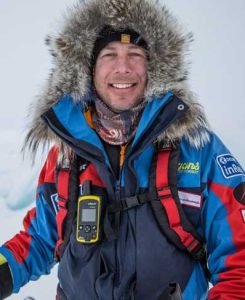
In autumn 2010, I joined the Everest Expedition organized by Himalayan Trail Blazer. Expeditions to Everest during the autumn season are rare, yet the team executed everything with outstanding professionalism, safety, and care. From the meticulous planning to the on-ground support, their expertise was evident at every step. I felt fully supported throughout the journey, and the experience remains one of the most memorable adventures of my life. I would highly recommend Himalayan Trail Blazer to anyone seeking a genuine and well-organized Himalayan expedition.”
Ryan Waters – Dhaulagiri Expedition 2010

Partnering with Himalayan Trail Blazer for the Dhaulagiri Expedition was an outstanding experience. Their logistical support, attention to detail, and deep knowledge of the Himalayan region made all the difference in ensuring the team’s safety and success. From the planning stages in Kathmandu to the final summit push, everything was handled with professionalism and genuine care. I’ve led expeditions across the world, and I can confidently say that Himalayan Trail Blazer sets a new standard in high-altitude guiding and support in Nepal.
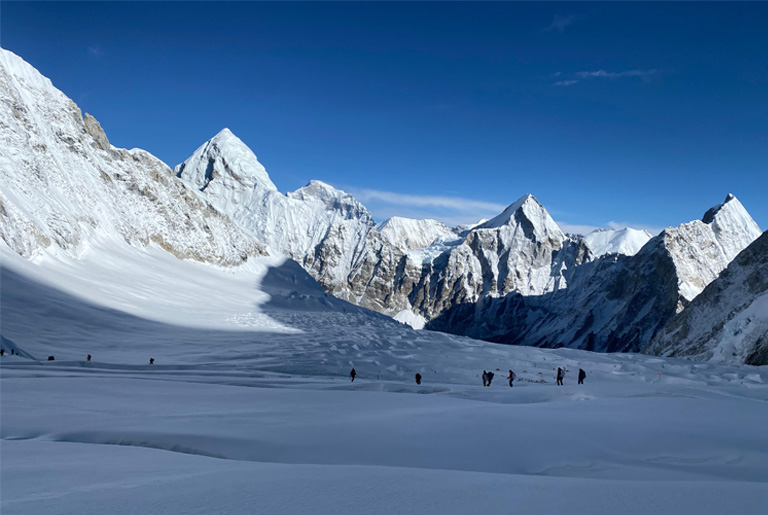
Mt. Lhotse Expedition
Mt. Lhotse Expedition (8516m) Trip Overview Itenary Detail Cost Include / Exclude FAQ Map “Lhotse” which means south peaks is...
Read More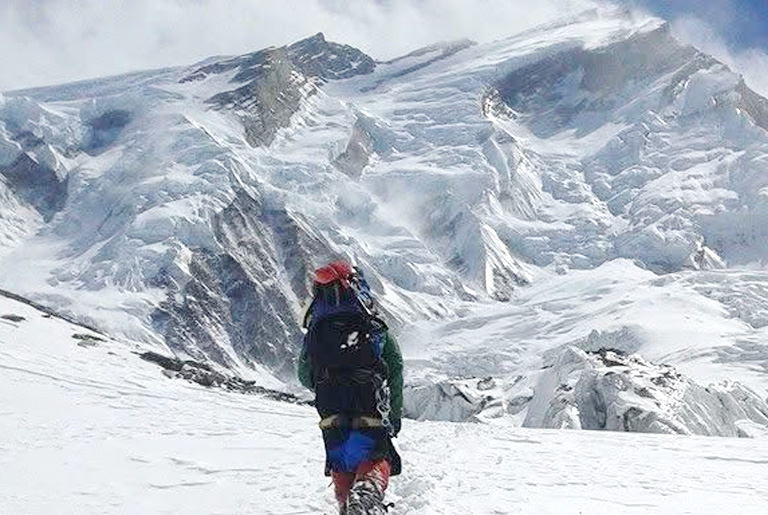
Mt. Annapurna I Expedition
Mt. Annapurna I Expedition (8091m) Trip Overview Itenary Detail Cost Include / Exclude FAQ Map Annapurna is an enormous Himalayan...
Read More
Mt. Manaslu Expedition (8163m)
Mt. Manaslu Expedition (8163m) Trip Overview Itenary Detail Cost Include / Exclude FAQ Map Mt. Manaslu (8,163m / 26,781ft) Located...
Read More
Mt. Amadablam Expedition (6812m)
Mt. Amadablam Expedition (6812m) Trip Overview Itenary Detail Cost Include / Exclude FAQ Map Mt. Ama Dablam expedition has long...
Read More
Mt. Everest Expedition (8848m) via…
Mt. Everest Expedition (8848m) via South Trip Overview Itenary Detail Cost Include / Exclude FAQ Map The highest summit alone...
Read More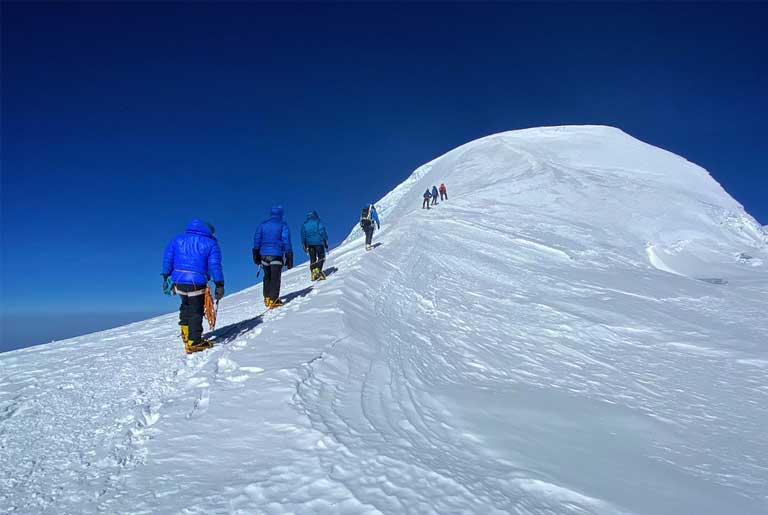
Mera Peak
Mera Peak Trip Overview Itenary Detail Cost Include / Exclude FAQ Map Mera Peak is the highest trekking peak in
Read More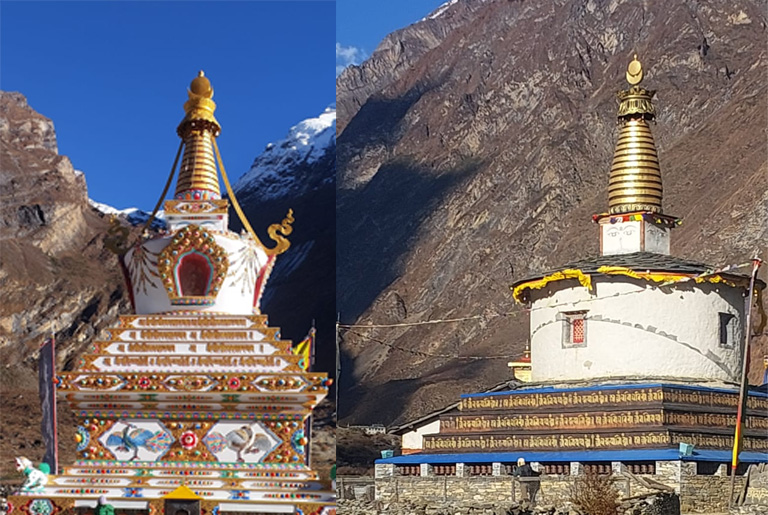

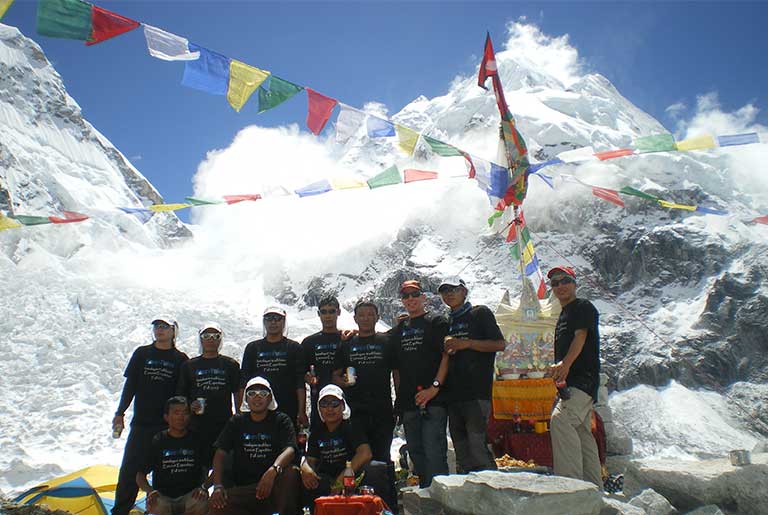
Everest Base Camp Drive Trek
Everest Base Camp Drive Optional Trip Overview Itenary Detail Cost Include / Exclude FAQ Map Following the footsteps of Hillary
Read More

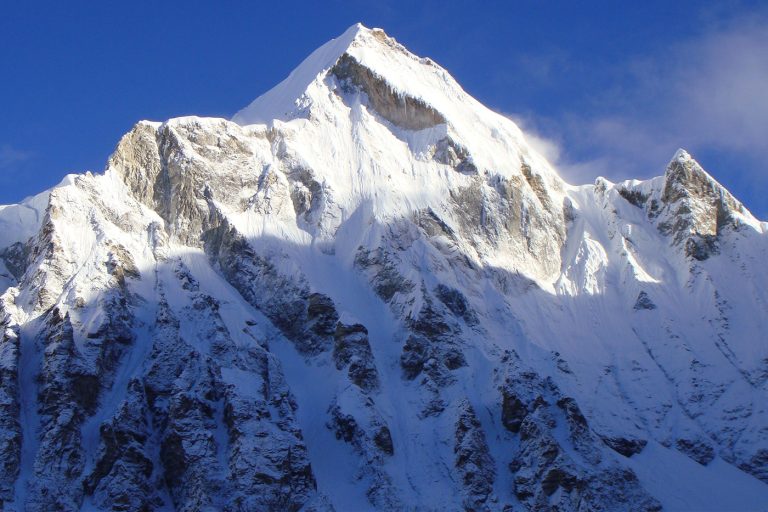
Everest Expedition 2015 Spring
Everest Expedition 2015 Spring Descriptions Himalayan Trail Blazer (HTB) has long been dedicated to organizing world-class climbing expeditions in the
Read More
Manaslu Expeditino, 2014, October
Manaslu Expedition, 2014, October Descriptions Himalayan Trail Blazer has long been recognized for its expertise in leading climbers through the
Read More
Manaslu Expeditino, 2013, October
Manaslu Expedition, 2013, October Descriptions Himalayan Trail Blazer Trekking & Expedition proudly announced the successful conclusion of its Manaslu Expedition
Read More
Manaslu Expedition, 2012, October
Manaslu Expedition, 2012, October Descriptions Manaslu, towering at 8,163 meters, is the eighth-highest mountain in the world. Nestled in the
Read More
Dhaulagiri Expedition 2012, March till
Dhaulagiri Expedition 2012, March till May - Organized by Himalayan Trail Blazer Descriptions In the spring of 2012, Himalayan Trail
Read More
Manaslu Expedition, 2011, October
Manaslu Expedition, 2011, October Descriptions In October 2011, Himalayan Trail Blazer organized a remarkable expedition to Manaslu, led by veteran
Read More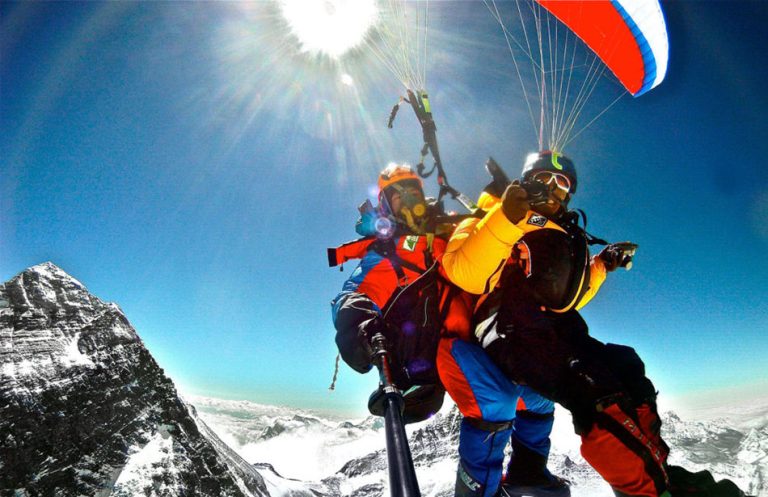
Summit to Sea, 2011 Spring
Summit to Sea, 2011 Spring https://youtu.be/pZ46cuM62ZE?si=oxNaAtznxP38eIK6 Descriptions On June 27, 2011, with the support of Himalayan Trail Blazer, adventurers Mr.
Read More
Everest Expedition via South –
Everest Expedition via South - 2010, October (SAVE THE POLES) -- Eric Larsen Descriptions In Support with Himalayan Trail Blazer,
Read More
Mt. Lhotse Expedition
Mt. Lhotse Expedition (8516m) Trip Overview Itenary Detail Cost Include / Exclude FAQ Map “Lhotse” which means south peaks is
Read More
Tharpa Chuli Peak
Tharpa Chuli Peak Trip Overview Itenary Detail Cost Include / Exclude FAQ Map Tharphu Chuli (locally known as), Tent Peak
Read More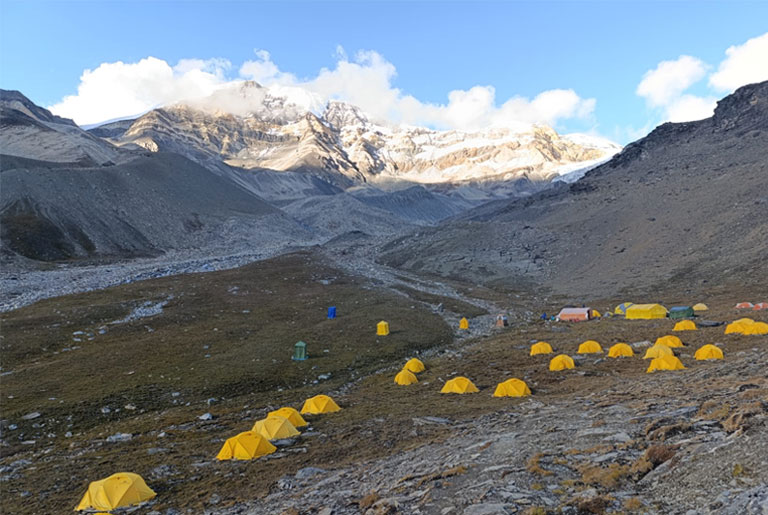
Chulu Far-East Peak
Chulu East Peak Trip Overview Itenary Detail Cost Include / Exclude FAQ Map These peaks are part of the Manang
Read More
Pisang Peak
Pissang Peak Trip Overview Itenary Detail Cost Include / Exclude FAQ Map Pisang Peak stands at elevation of 6091 meters
Read More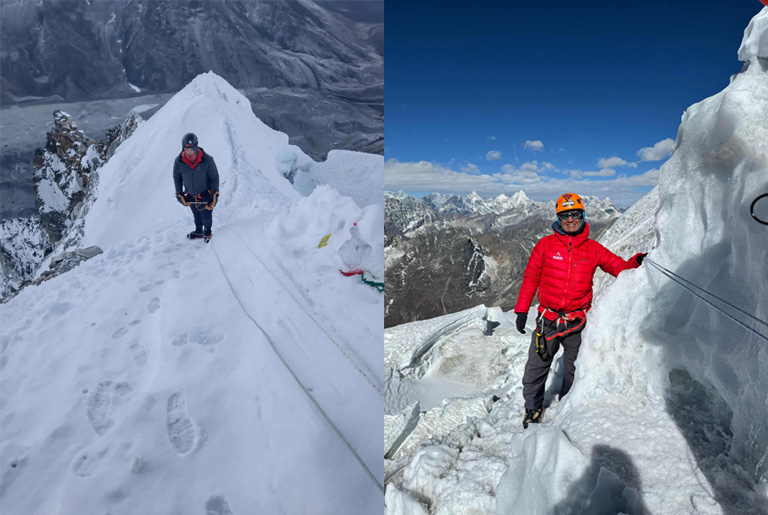
Island Peak
Island Peak Trip Overview Itenary Detail Cost Include / Exclude FAQ Map Island Peak is 6187 meters high and one
Read More
Lobuche Peak
Lobuche Peak Trip Overview Itenary Detail Cost Include / Exclude FAQ Map Lobuche Peak 6119m is one of the popular
Read More
Mt. Annapurna I Expedition
Mt. Annapurna I Expedition (8091m) Trip Overview Itenary Detail Cost Include / Exclude FAQ Map Annapurna is an enormous Himalayan
Read More
Mt. Manaslu Expedition (8163m)
Mt. Manaslu Expedition (8163m) Trip Overview Itenary Detail Cost Include / Exclude FAQ Map Mt. Manaslu (8,163m / 26,781ft) Located
Read More
Mt. Amadablam Expedition (6812m)
Mt. Amadablam Expedition (6812m) Trip Overview Itenary Detail Cost Include / Exclude FAQ Map Mt. Ama Dablam expedition has long
Read More
Mt. Everest Expedition (8848m) via
Mt. Everest Expedition (8848m) via South Trip Overview Itenary Detail Cost Include / Exclude FAQ Map The highest summit alone
Read More
Manaslu Trek
Manaslu Trek Trip Overview Itenary Detail Cost Include / Exclude FAQ Map Trekking around Manaslu offers a unique opportunity to
Read More
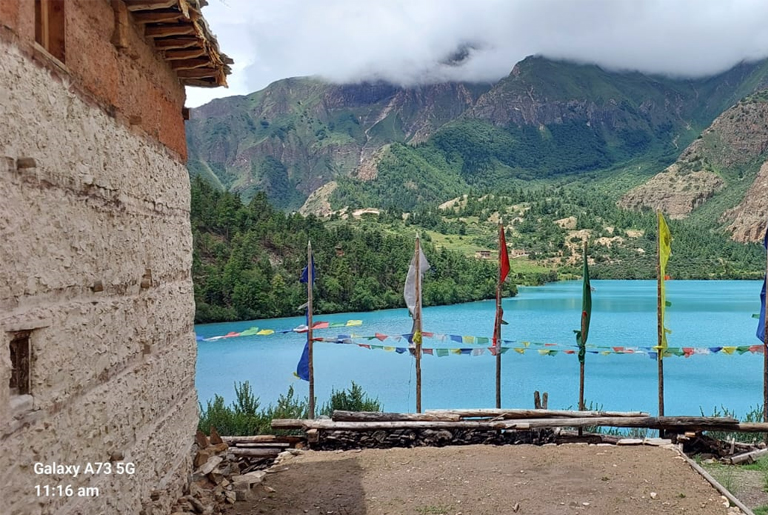
Lower Dolpo Trek
Lower Dolpo Trek Trip Overview Itenary Detail Cost Include / Exclude FAQ Map Make a rendezvous with the remote Himalaya
Read More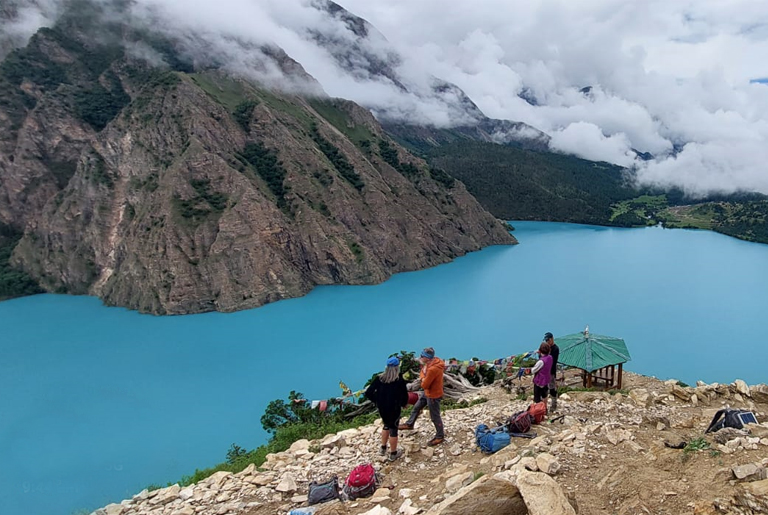
Upper Dolpo Trek
Upper Dolpo Trek Trip Overview Itenary Detail Cost Include / Exclude FAQ Map Dolpo, a land beyond the Himalayas, conjures
Read More
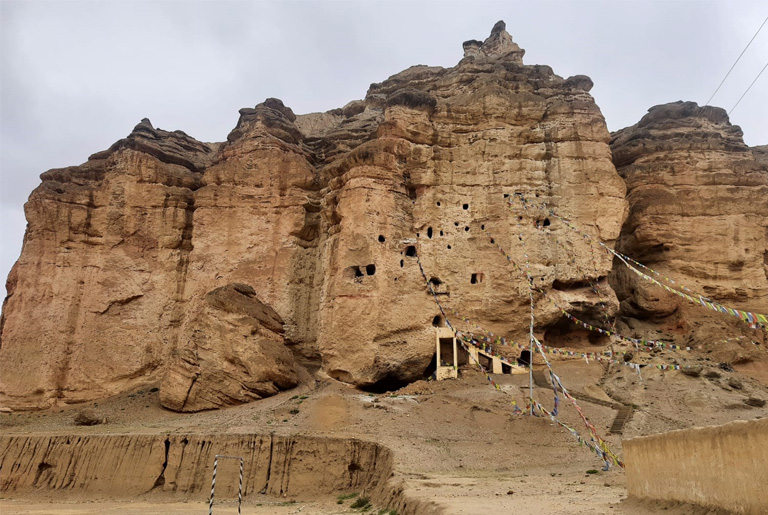
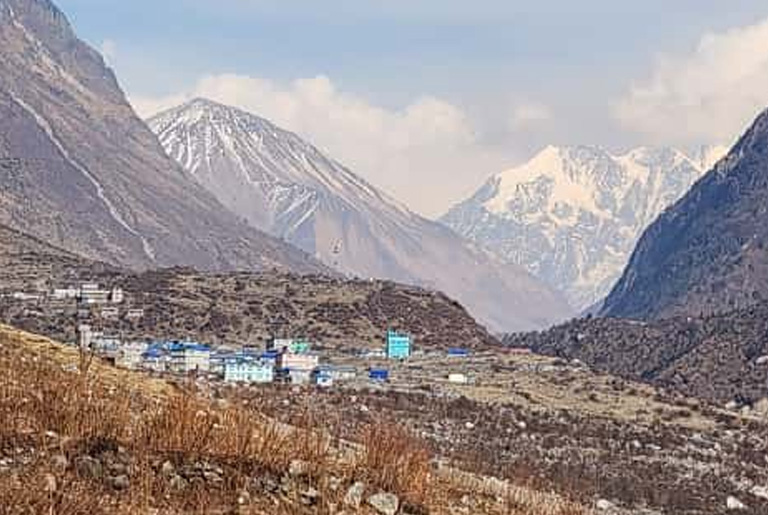
Lantang Valley Trek
Lantang Valley Trek Trip Overview Itenary Detail Cost Include / Exclude FAQ Map A trek to the Langtang valley has
Read More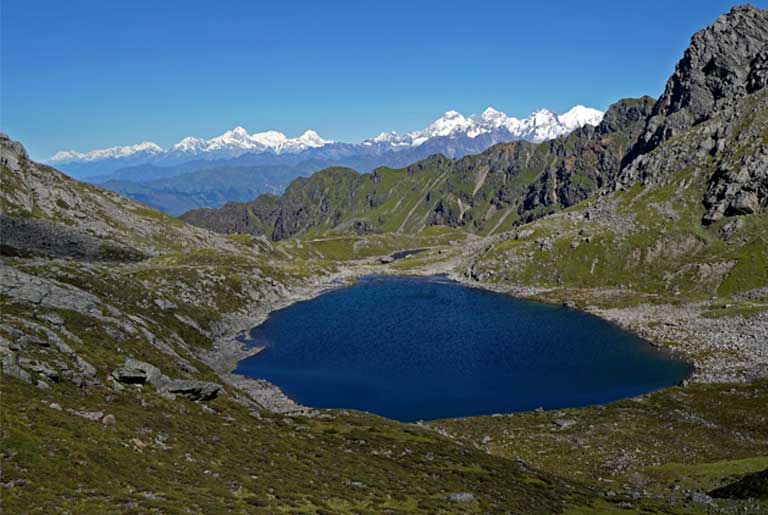
Langtang Gosaikunda Helambu Trek
Langtang Gosaikunda Helambu Trek Trip Overview Itenary Detail Cost Include / Exclude FAQ Map This classical trek combines three major
Read More


Jomsom – Muktinath Trek
Joomsom - Muktinath Trek Trip Overview Itenary Detail Cost Include / Exclude FAQ Map The Jomsom and Muktinath trek is
Read More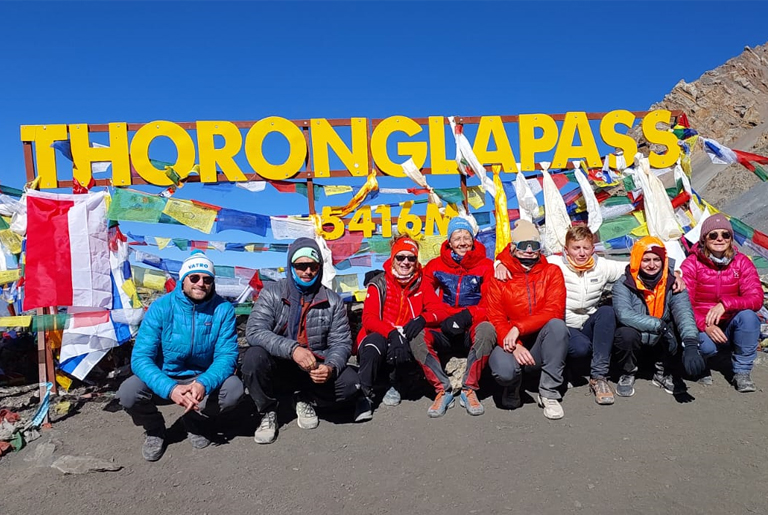
Annapurna Circuit Trek
Annapurna Circuit Trek Trip Overview Itenary Detail Cost Include / Exclude FAQ Map Since it opened to foreign trekkers in
Read More
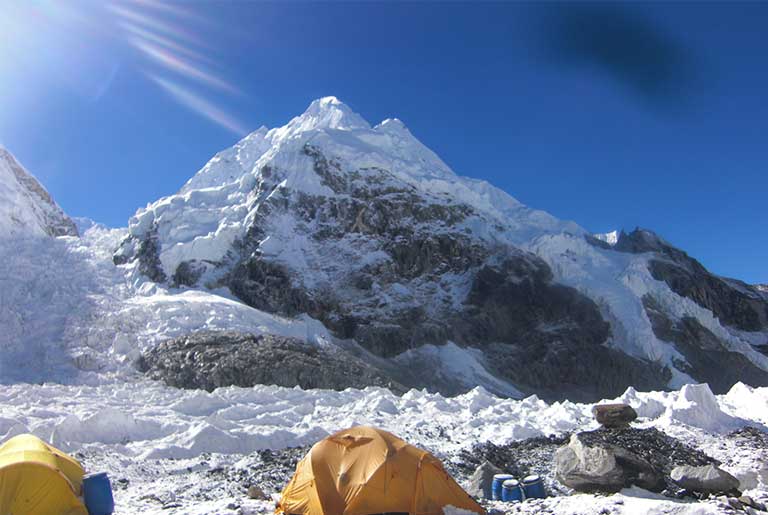
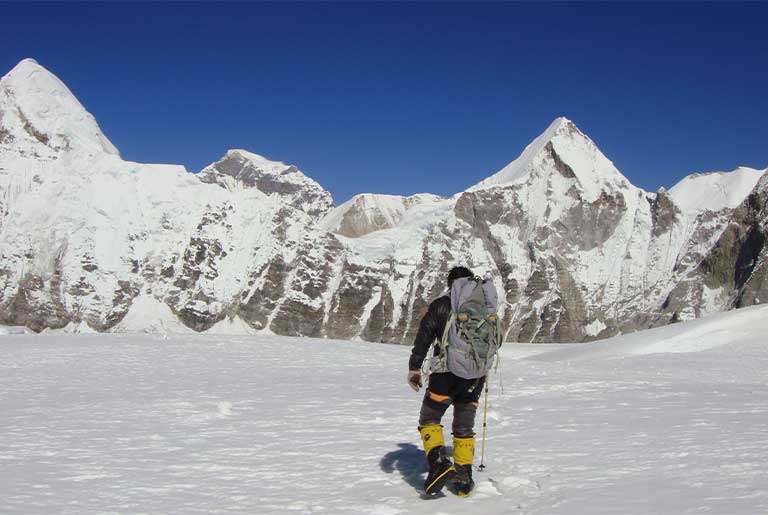


Gokyo Trek
Gokyo Trek Trip Overview Itenary Detail Cost Include / Exclude FAQ Map Trekking around Gokyo valley is considered a traditional
Read More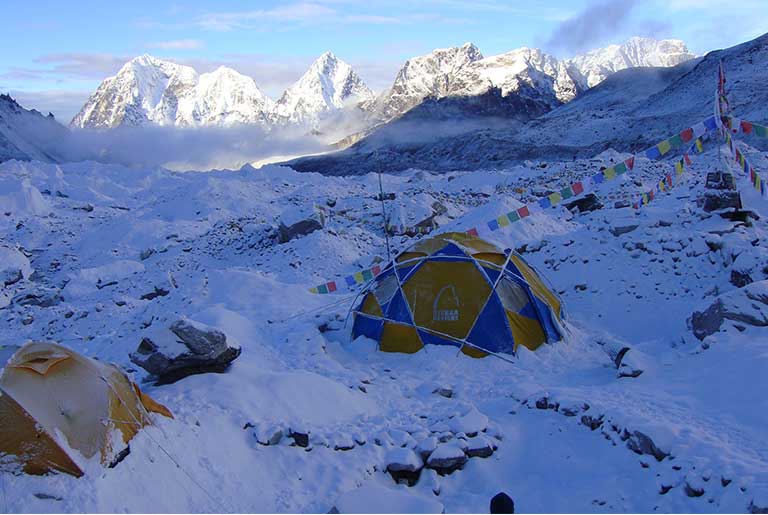
Everest Panorama Trek
Everest Panaroma Trek Trip Overview Itenary Detail Cost Include / Exclude FAQ Map This easy trek in the foothills of
Read More
Everest Base Camp Trek
Everest Base Camp Trek Trip Overview Itenary Detail Cost Include / Exclude FAQ Map Following the footsteps of Hillary and
Read More





